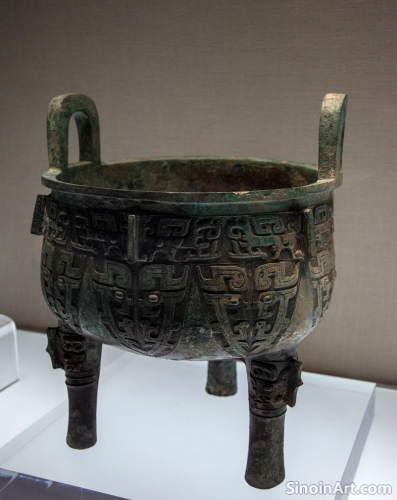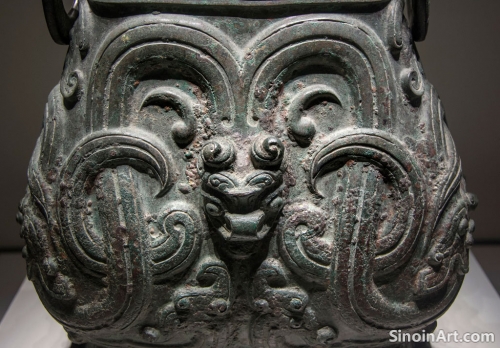Bronze Ware and Ancient Chinese Conceptions of Time: Cycles, Rituals, and Cosmic Order
|
Ancient Chinese perceptions of time were deeply intertwined with the cycles of nature, the rhythms of agriculture, and the rituals that governed daily life, and bronze ware played a key role in both reflecting and reinforcing these conceptions. From astronomical instruments to ritual objects, bronze was used to mark and to understand the flow of time. The careful study of these artifacts helps to provide a better insight into the ancient understanding of time.  Bronze was used to create tools for measuring time, such as sundials and water clocks, which were often carefully designed to reflect the specific cycles of the year, the lunar calendar, and the rhythm of human activity. The use of bronze helped to provide accurate measurements of time, and to create a more ordered and understandable world.  Bronze ritual vessels and musical instruments were also used to mark and celebrate specific times, including solstices, equinoxes, and agricultural festivals, all meant to harmonize human activities with the larger rhythms of the cosmos. The selection of specific objects for particular times helped to underscore and emphasize their spiritual importance.  The inscriptions on some bronze objects often included dates and calendrical information, helping to connect specific events and rituals with the flow of time, reinforcing a cyclical understanding of history and the natural world. The careful recording of time is essential to the understanding of the past, and these inscriptions provide valuable data. The intersection of history and the measurement of time is a powerful element in ancient Chinese culture. The study of bronze ware in the context of ancient Chinese timekeeping helps to reveal a complex worldview that sought to integrate human experience with the natural order and cosmic patterns. The study of these objects helps to connect us to the ancient understanding of time and its role in daily life. |
Tag : bronze timekeeping, ancient Chinese calendars, time perception, ritual cycles, cosmic order
Related information
- The Techniques of Inlaying Bronze: Incorporating Precious Materials into Metalwork
- Bronze Ware and the Representation of Authority: Imperial Symbols and Power
- The Use of Bronze in Ancient Chinese Household Items: Beyond Ritual and Warfare
- Bronze Ware and the Development of Ancient Chinese Writing: Scripts, Inscriptions, and the Communication of Ideas
- Bronze Ware and the Development of Ancient Chinese Calendar Systems: Marking Time and Ritual Cycles
This article explores the techniques of inlaying bronze in ancient China, highlighting the use of precious materials like gold, silver, and jade, and demonstrating how these techniques added sophistication, symbolism, and artistic value to bronze objects.
This article explores the representation of authority in Chinese bronze ware, highlighting the use of symbols, emblems, weapons, and other objects to demonstrate imperial and elite power, and the connections between material culture, political ideology, and the assertion of control.
This article explores the use of bronze in ancient Chinese household items, highlighting objects like mirrors, lamps, braziers, tools, and containers, and demonstrating how bronze enriched everyday life beyond ritual and warfare.
This article explores the connection between bronze ware and the development of ancient Chinese writing, highlighting the evolution of script styles through inscriptions, the importance of writing as a medium for record-keeping and communication, and the role of bronze in shaping the development of written language.
This article explores the use of bronze in ancient Chinese calendar systems, highlighting its role in creating timekeeping devices like sundials, tracking the passage of time, and linking calendars to both agricultural and ritual cycles.